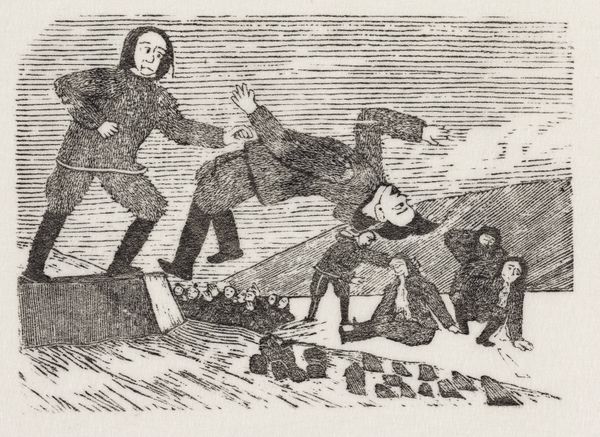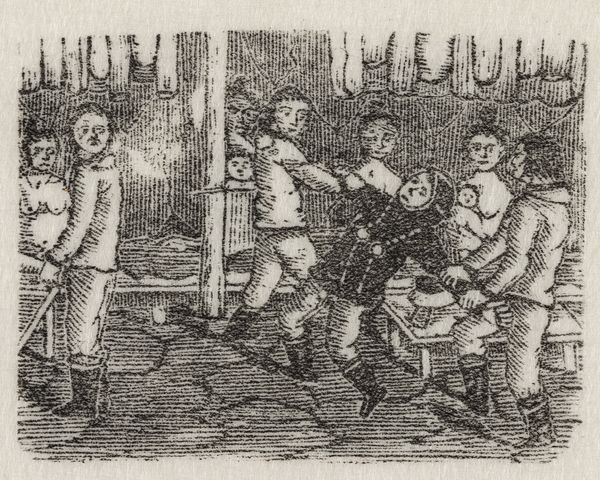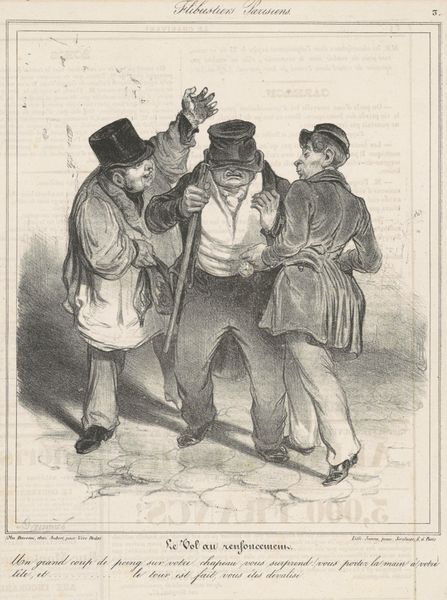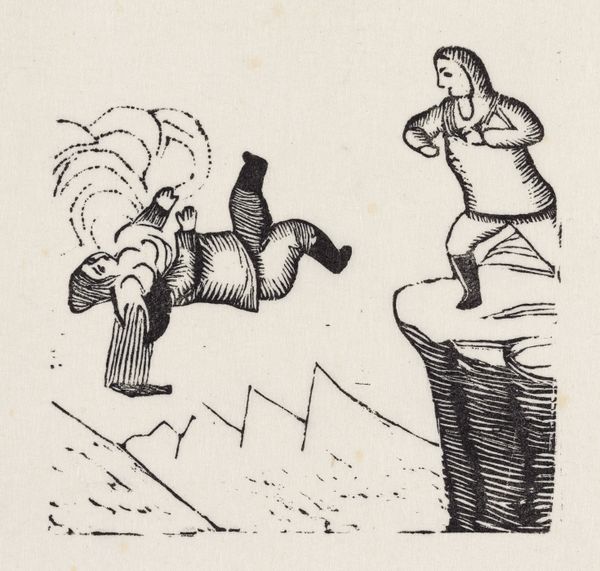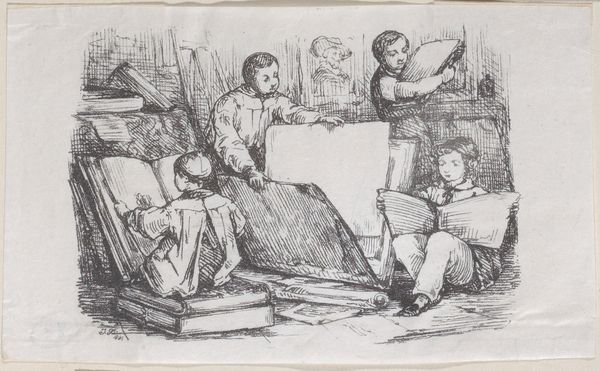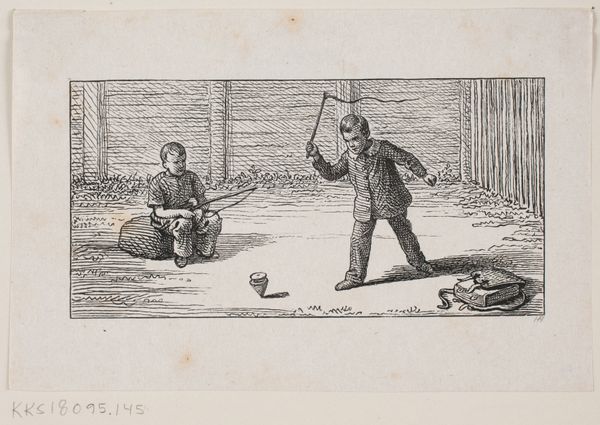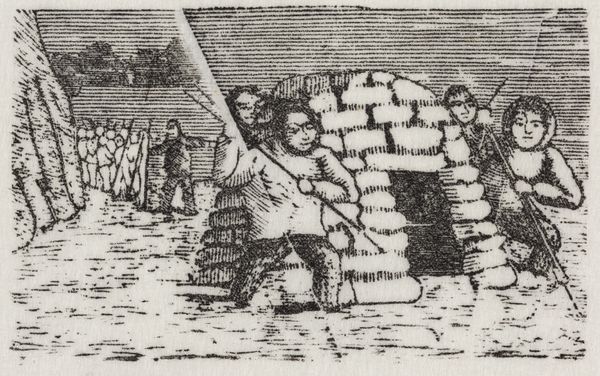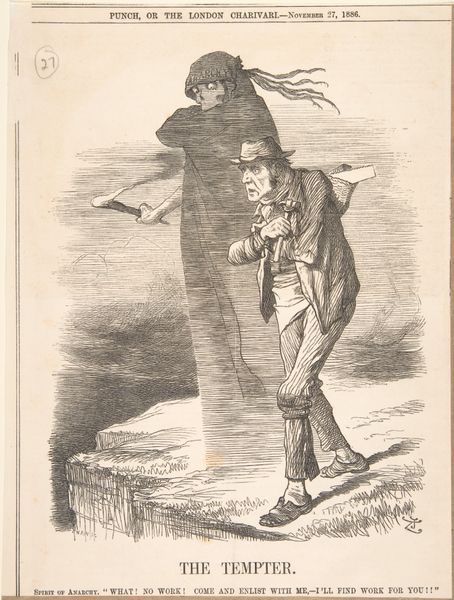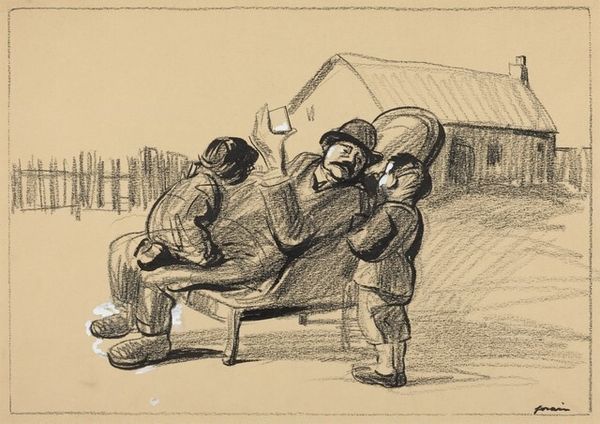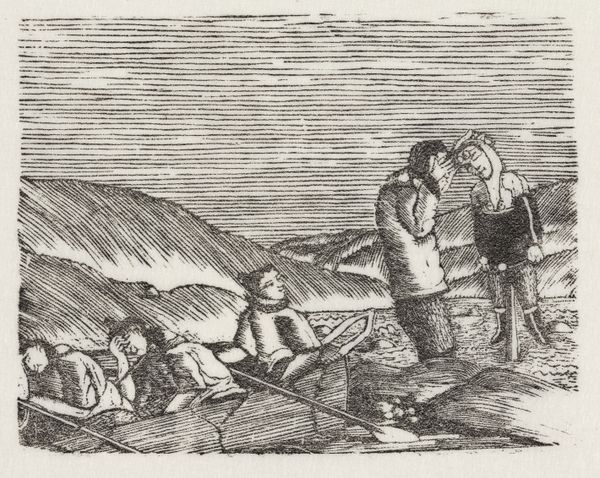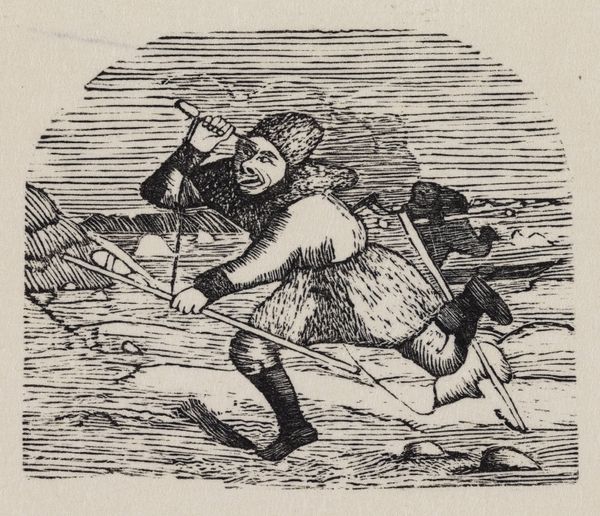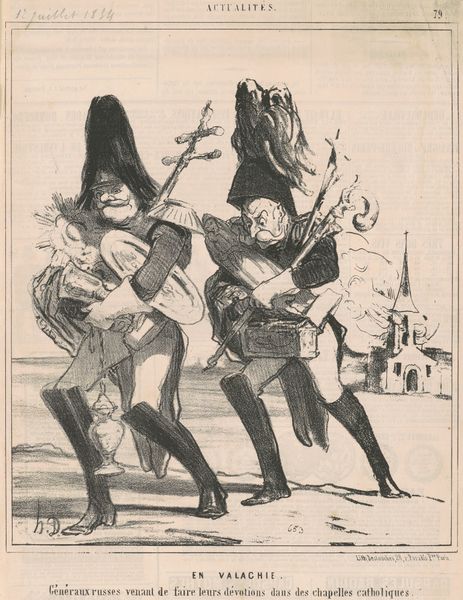
Fortællingen om Kunuk den forældreløse: Kunuk overvinder kæmpen Ungilaktake og hans kammerater 1858 - 1860
0:00
0:00
print, woodcut
#
narrative-art
#
pen drawing
# print
#
pen illustration
#
pen sketch
#
old engraving style
#
ink line art
#
linework heavy
#
pen-ink sketch
#
thin linework
#
woodcut
#
line
#
pen work
#
sketchbook drawing
#
indigenous-americas
Dimensions: 79 mm (height) x 113 mm (width) (billedmål)
Aron of Kangeq, an Inuit hunter and artist, created this woodcut illustrating the story of Kunuk the orphan. Produced in Greenland in the mid-19th century, the image presents a clash between Kunuk and the giant Ungilaktake, surrounded by onlookers. Consider the setting. Greenland was then a Danish colony, and Aron was among the first Inuit artists to create works for a European audience. Woodcuts like this one were often made for books and aimed at educating Europeans about Inuit culture and folklore. The image’s visual style blends traditional Inuit art forms with European printmaking techniques. What does this combination tell us? It speaks to the complex cultural exchange happening in Greenland at the time, where traditional stories were being adapted and translated for a foreign audience. The artist's choices reflect not only his personal vision but also the broader socio-political context of colonialism and cultural representation. Historians delve into colonial archives, missionary records, and anthropological studies to fully understand these dynamics. The meaning of art shifts depending on its institutional and social context.
Comments
No comments
Be the first to comment and join the conversation on the ultimate creative platform.
